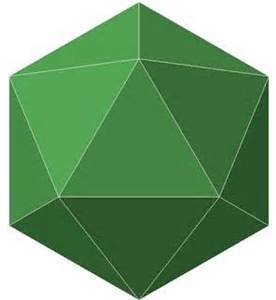Simple, just cross one edge, right?

A bug starts on one vertex of an icosahedron. Call it A. Define a second vertex adjacent to the one he starts on, and call it B.
Every second he randomly walks along one edge to another vertex. What is the expected value of the number of seconds it will take for him to reach the vertex B?
Clarification: Every second he chooses randomly between the five edges available to him, including the one he might have just walked along. On his first move he has a 1/5 probability of reaching B.
Other Expected Value Quizzes
Image credit: www.kjmaclean.com.
The answer is 11.
This section requires Javascript.
You are seeing this because something didn't load right. We suggest you, (a) try
refreshing the page, (b) enabling javascript if it is disabled on your browser and,
finally, (c)
loading the
non-javascript version of this page
. We're sorry about the hassle.
We can classify the icosahedron's 1 2 vertices into four groups: (1) The five vertices adjacent to the vertex opposite to B, (2) the five vertices adjacent to B, (3) the vertex opposite B, and (4) the vertex B. And by symmetry we can call E 1 , E 2 , and E 3 the expectation values for the number of seconds it will take to get to B from any vertex in those sets respectively. e.g. E 1 is the expectation value for the number of seconds it will take to reach B from any vertex in group (1).
This gives us the following set of linear equations:
Solving for E 2 , since he starts in group 2, gives us E 2 = 1 1